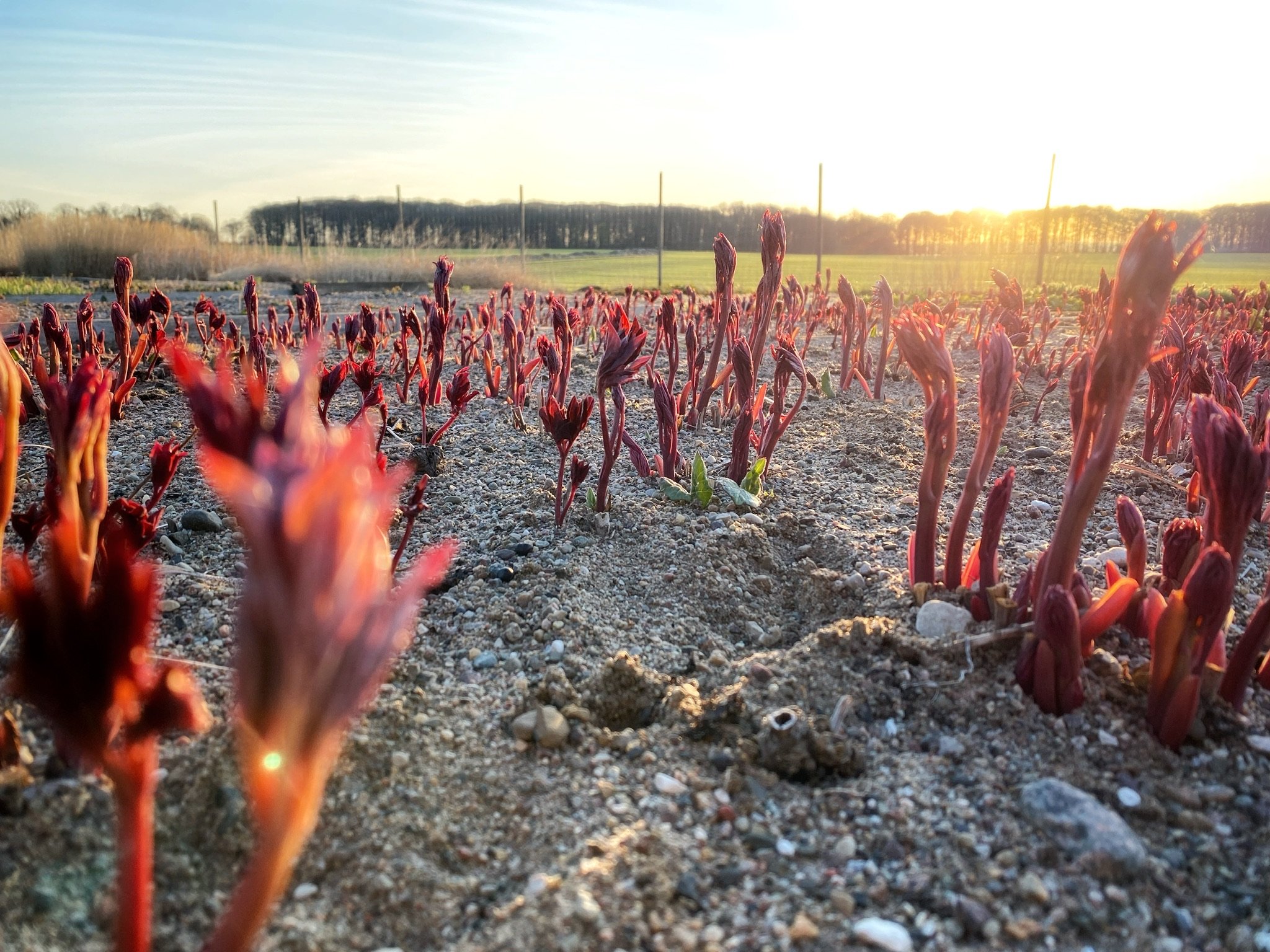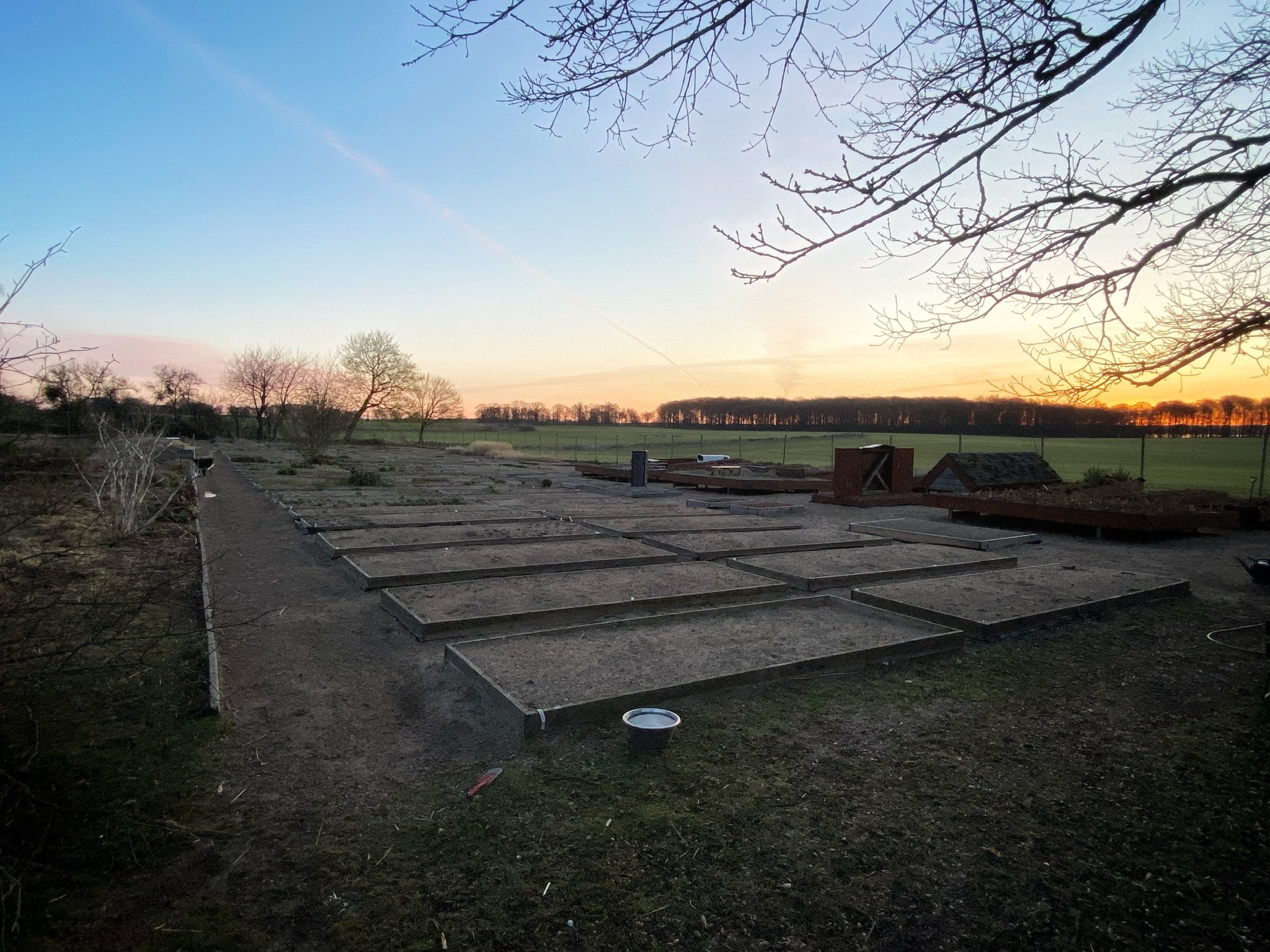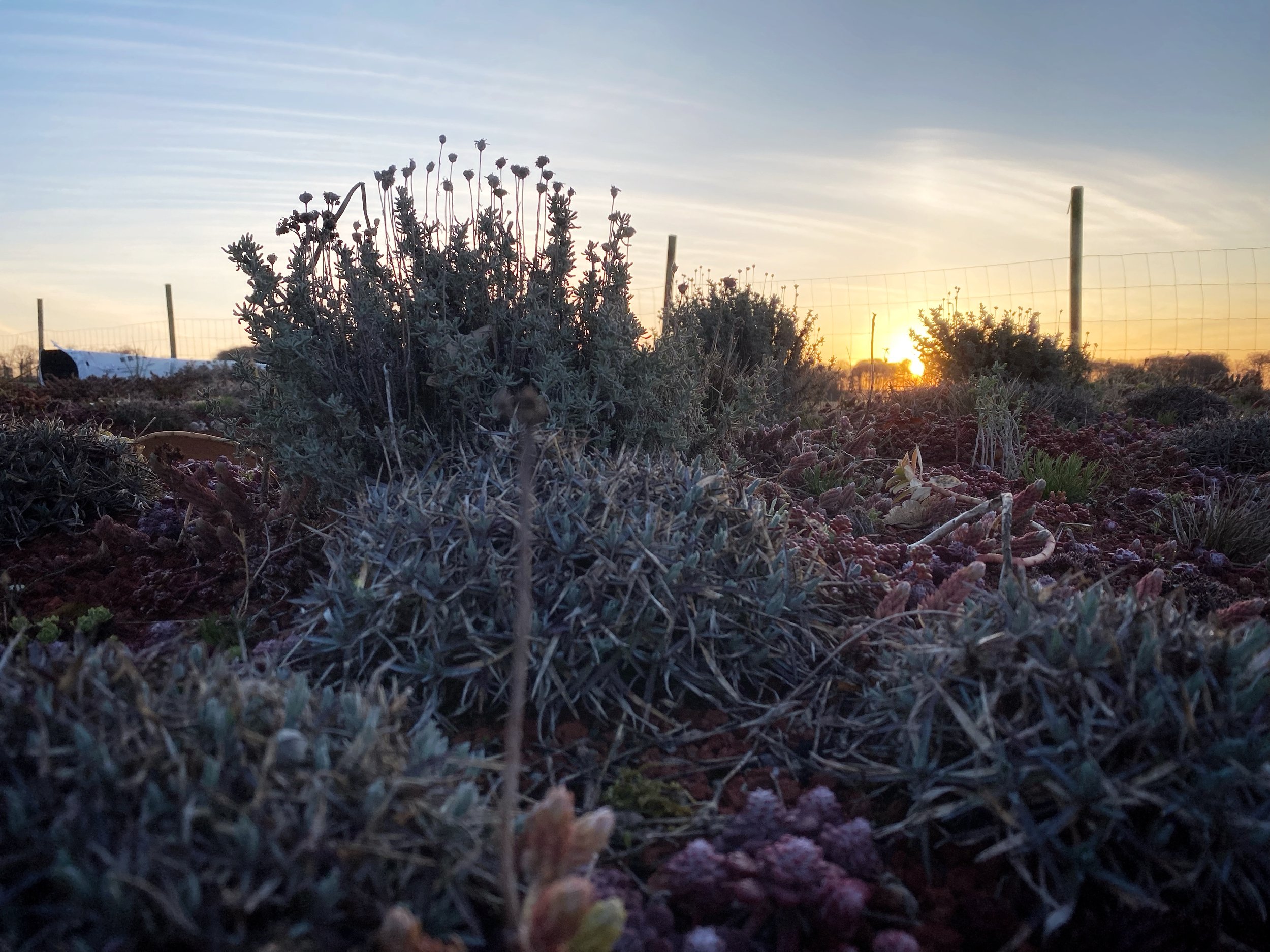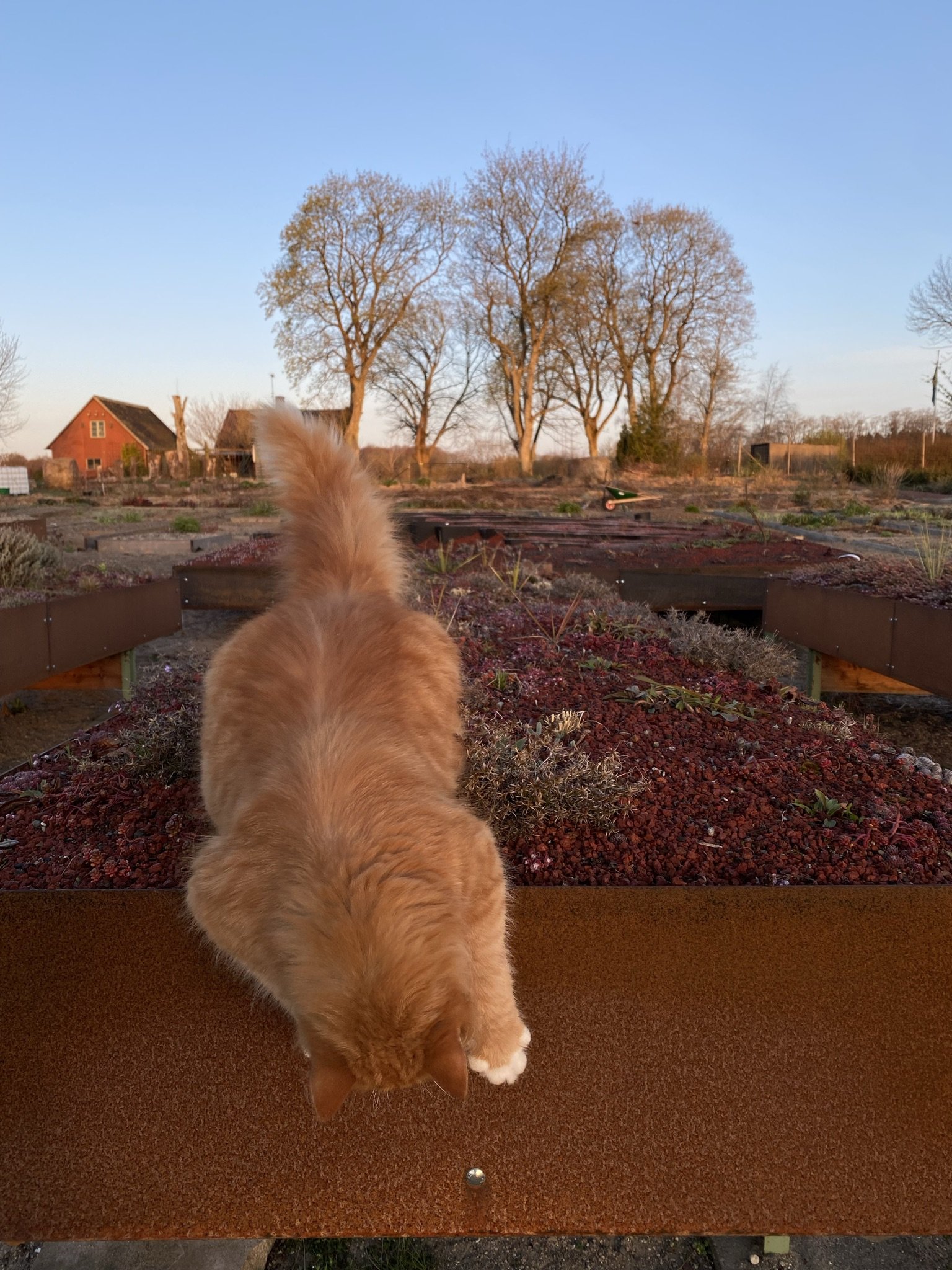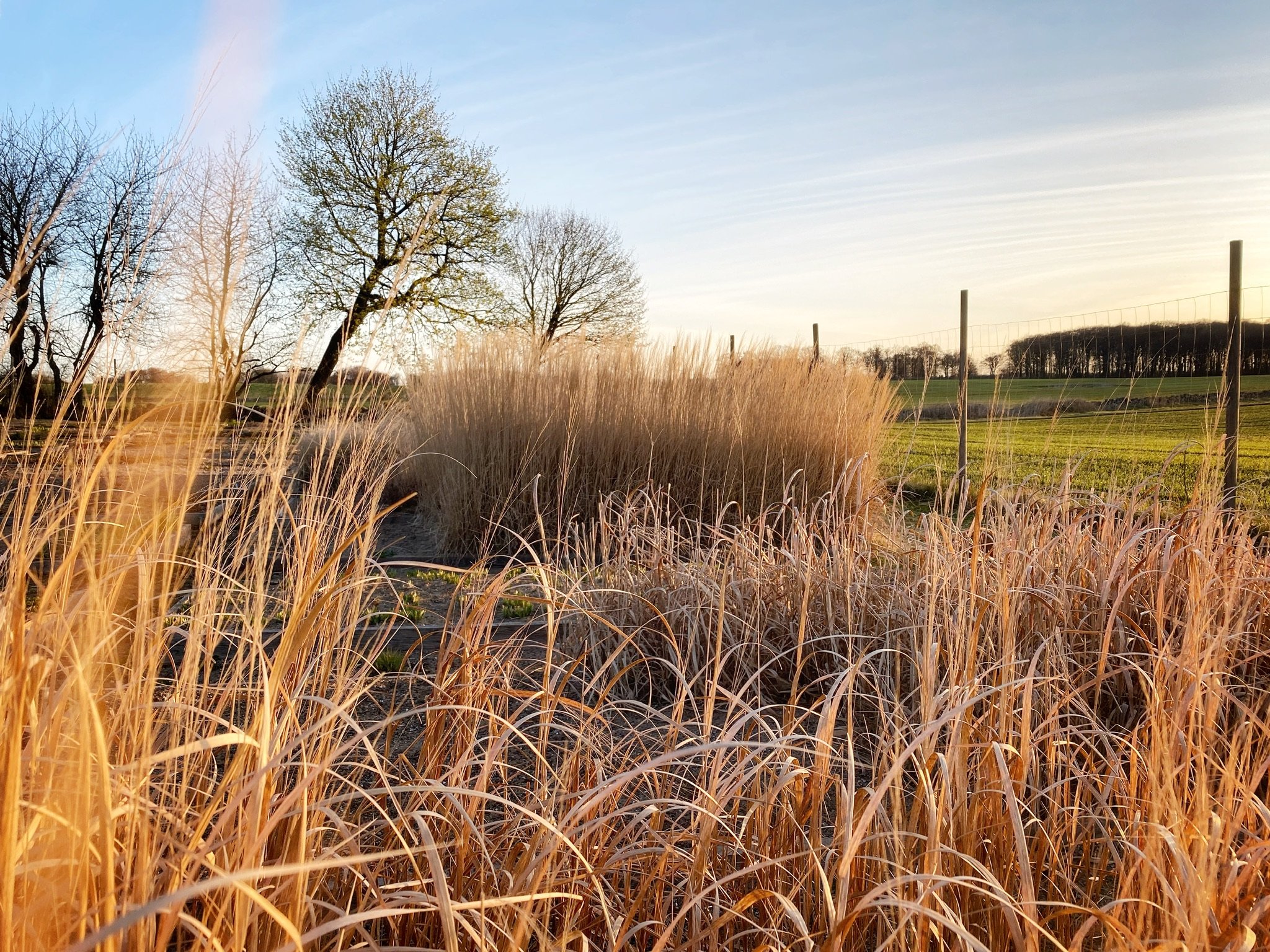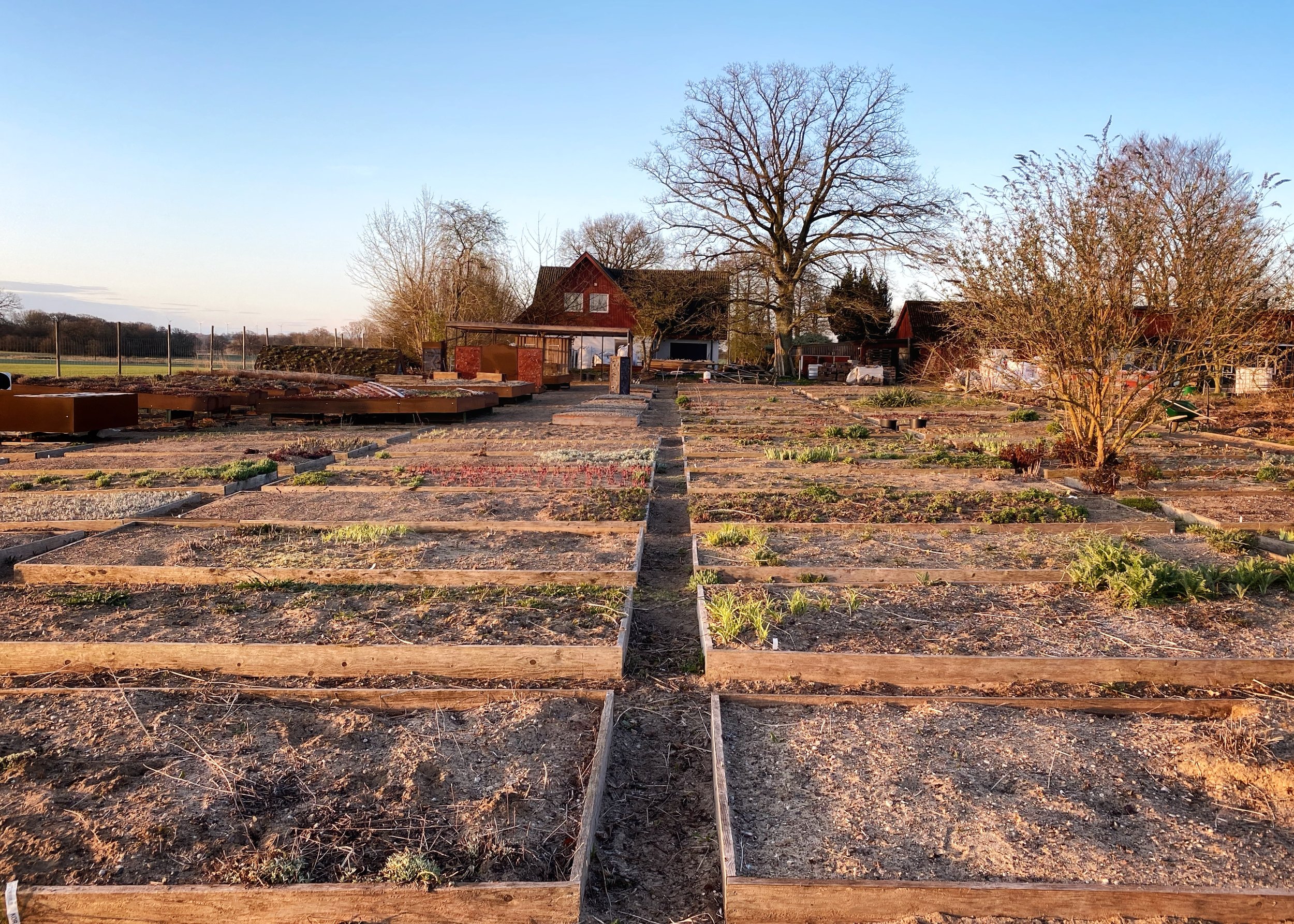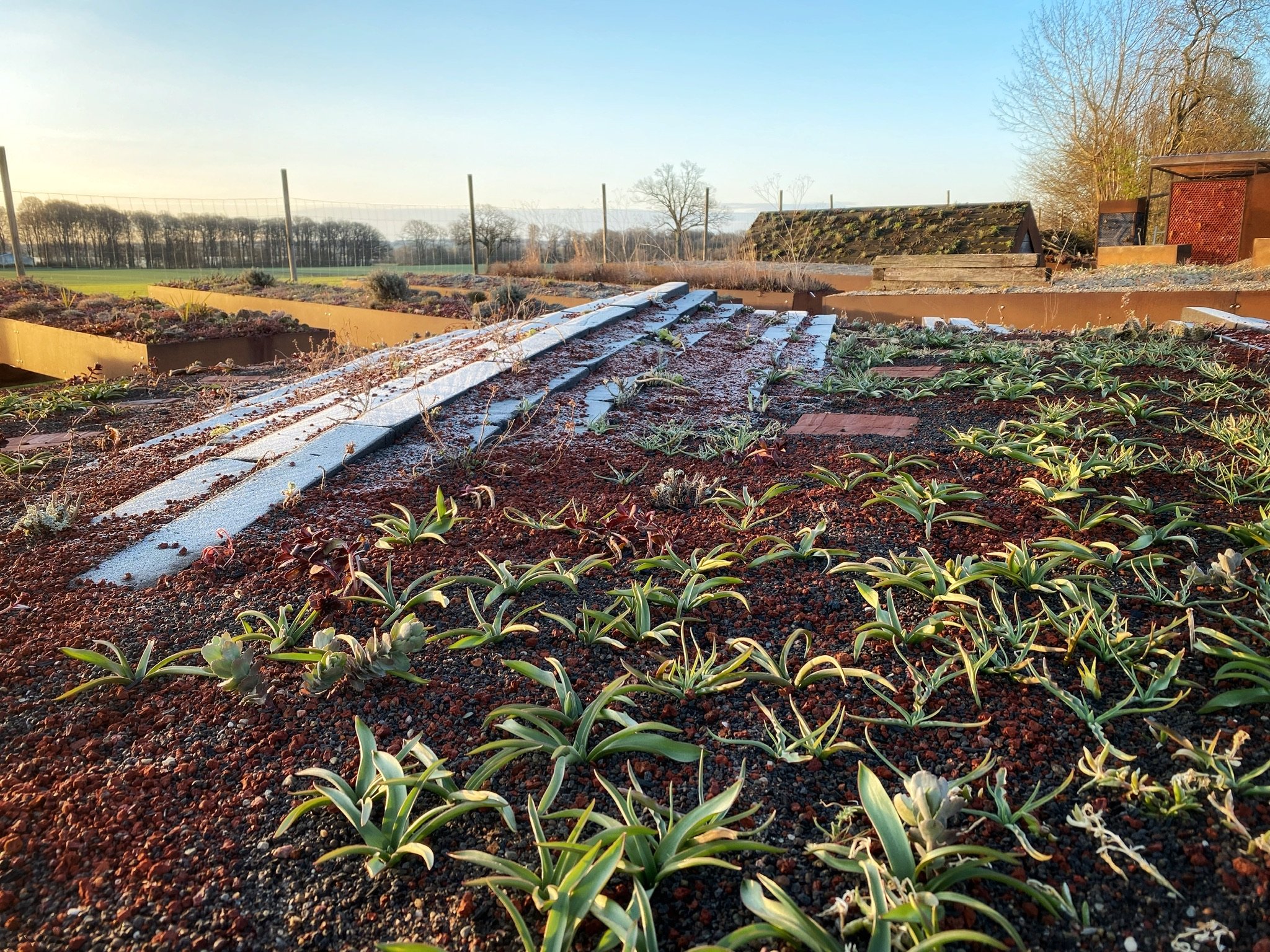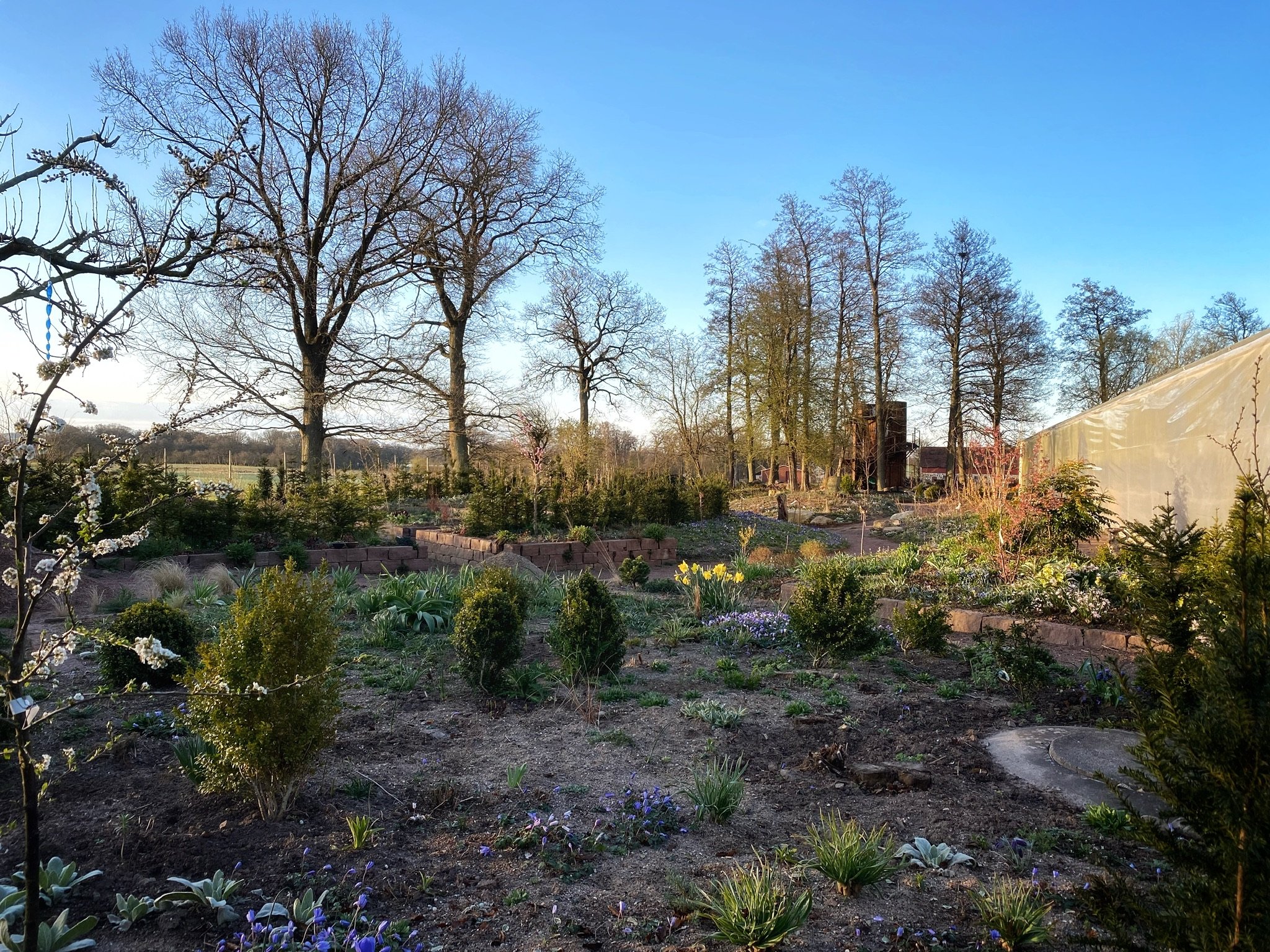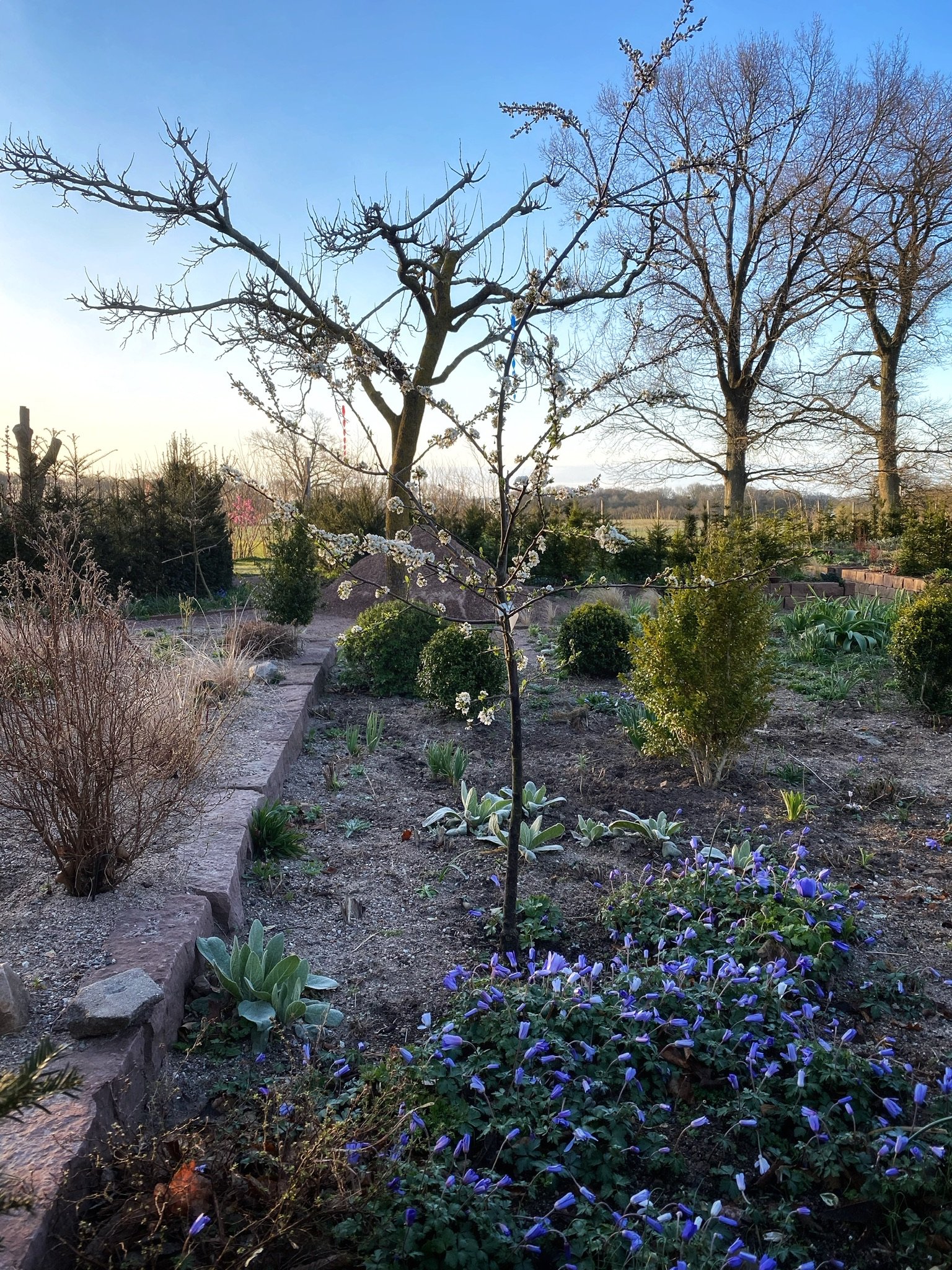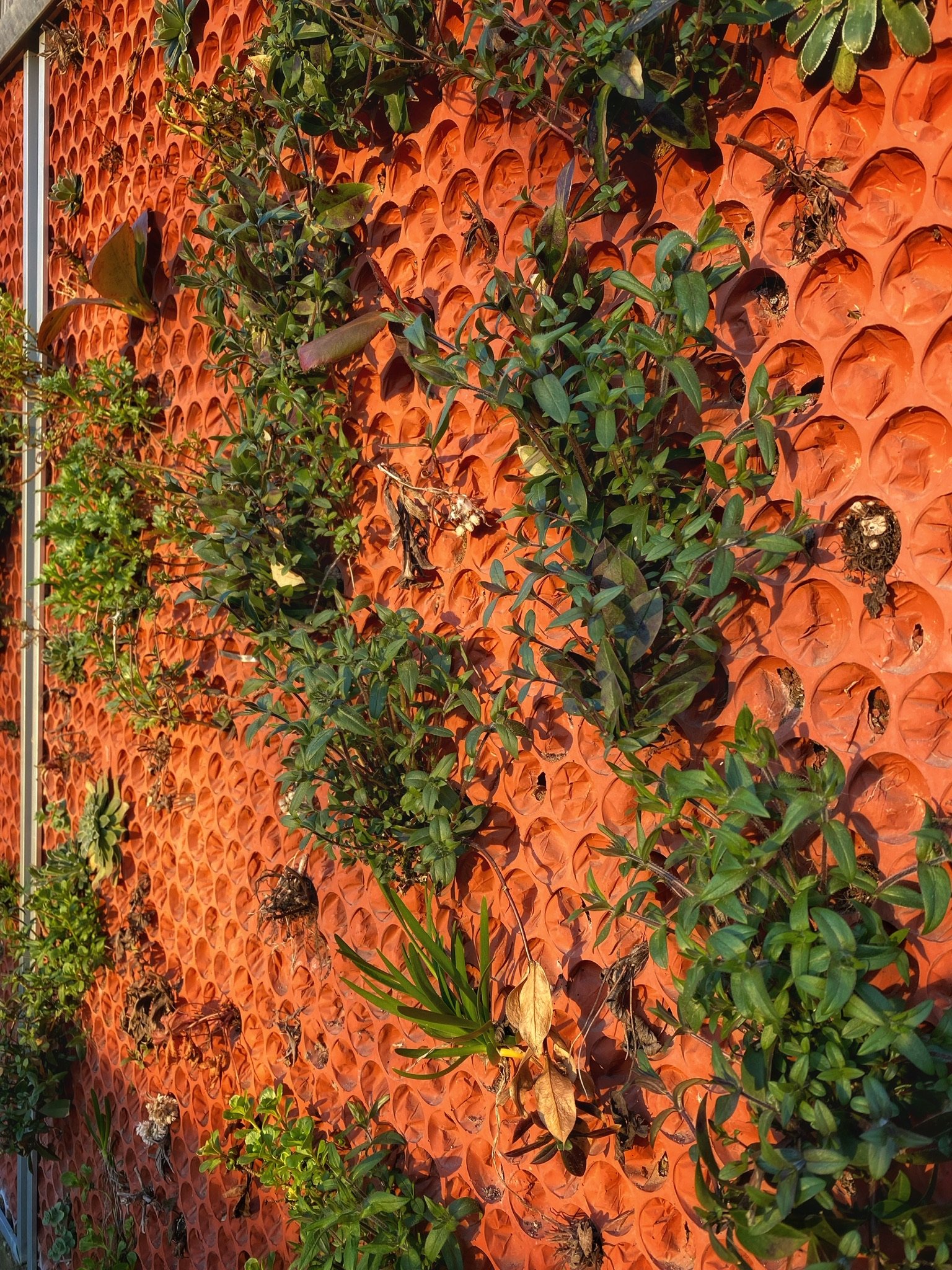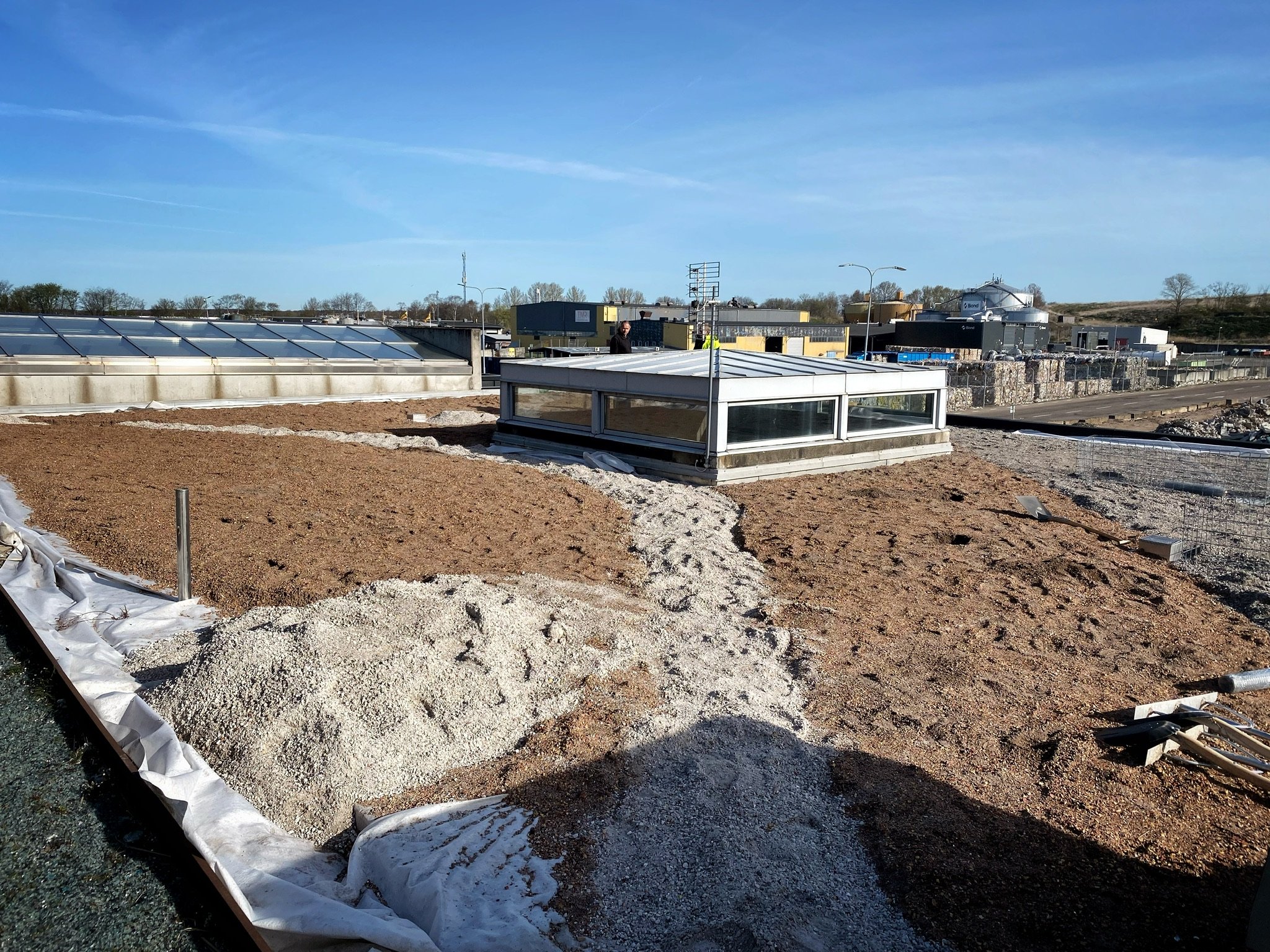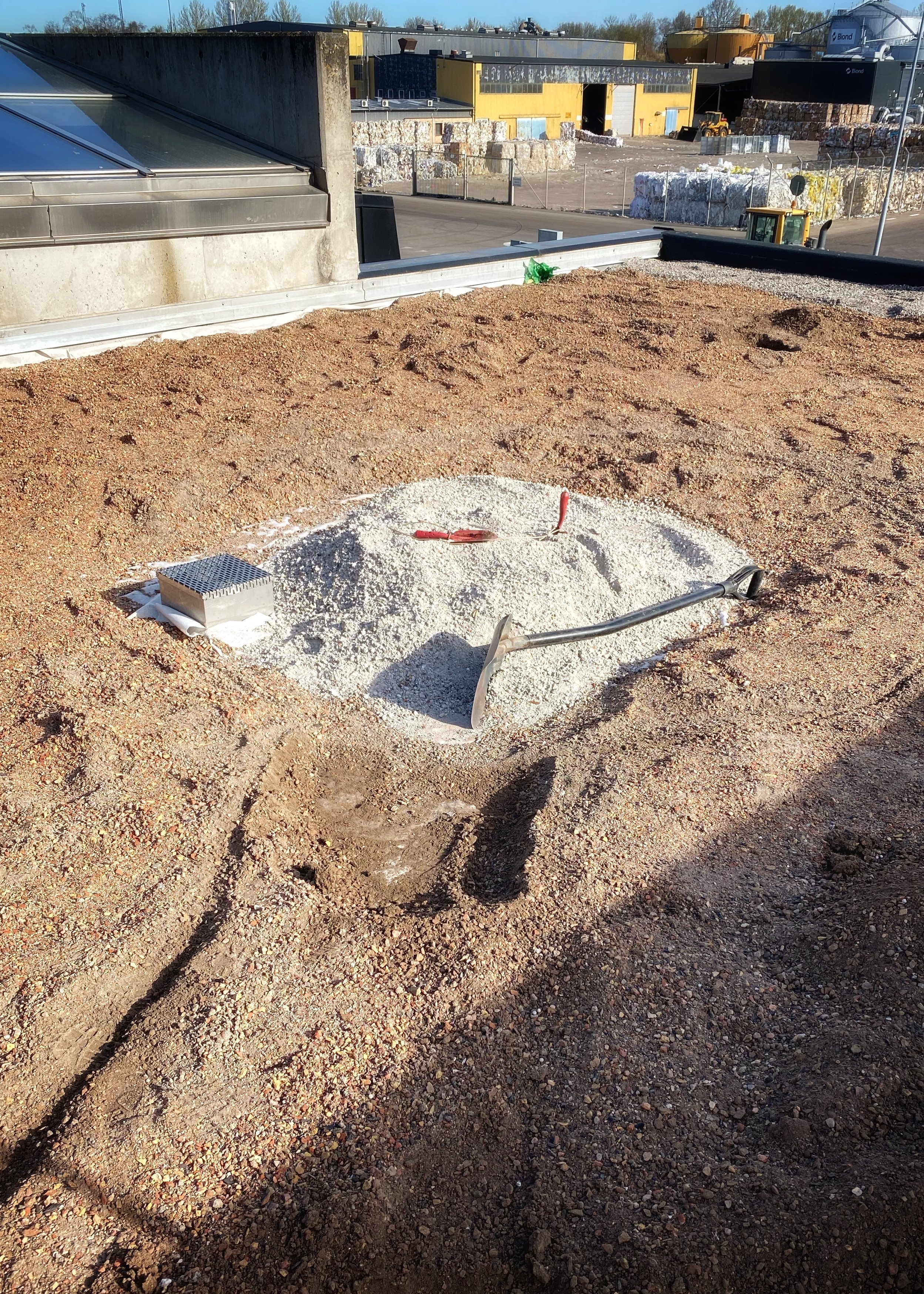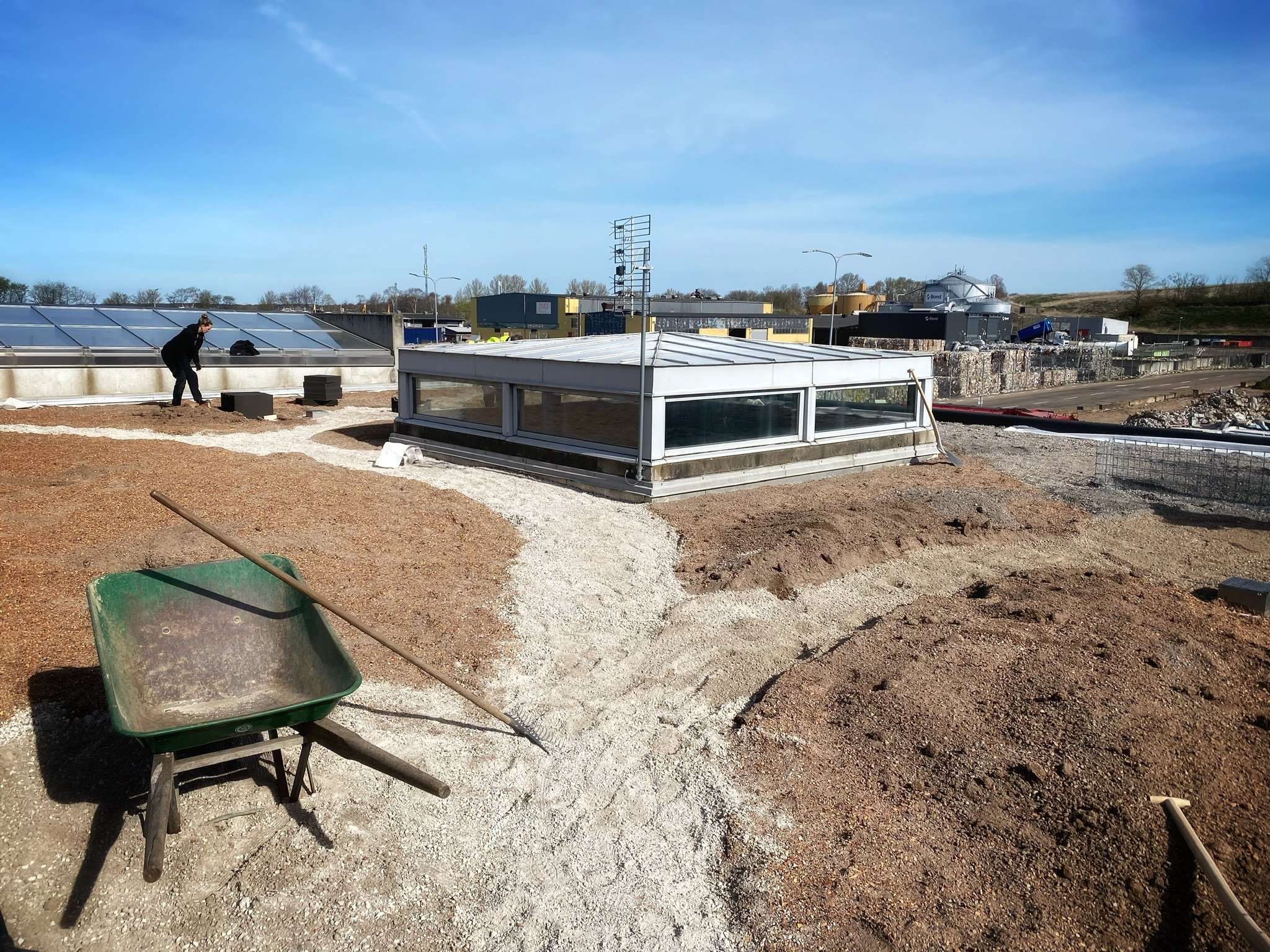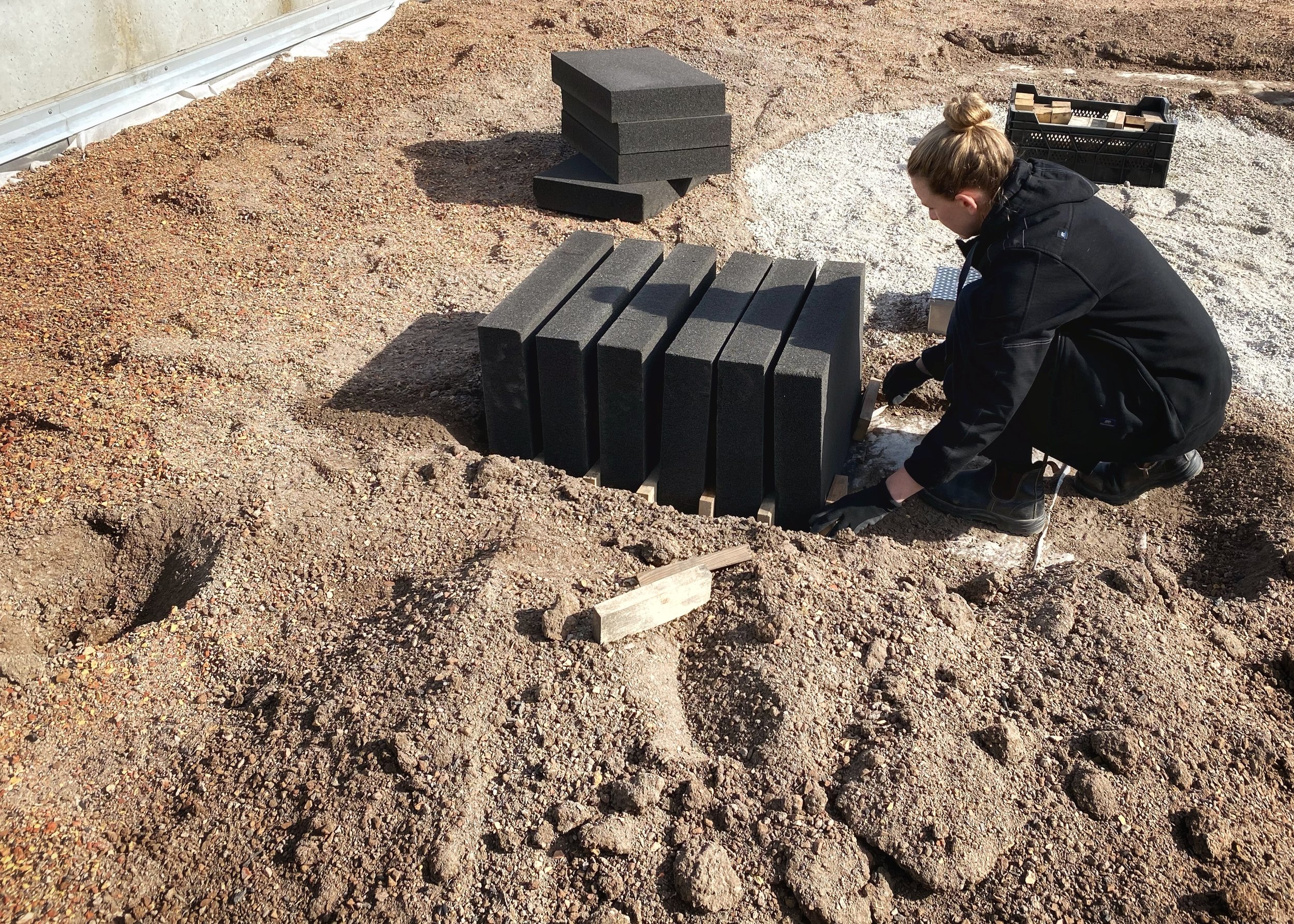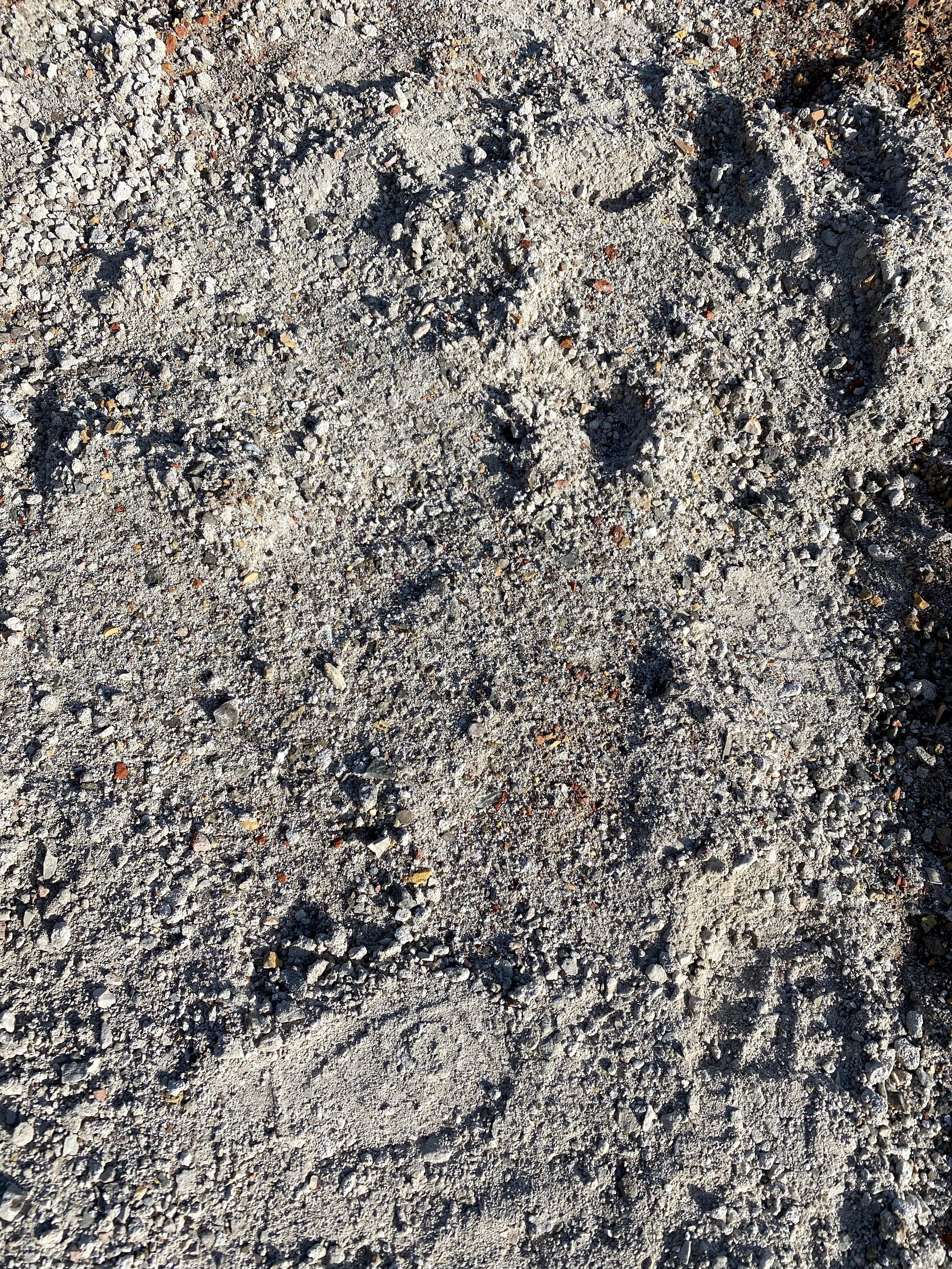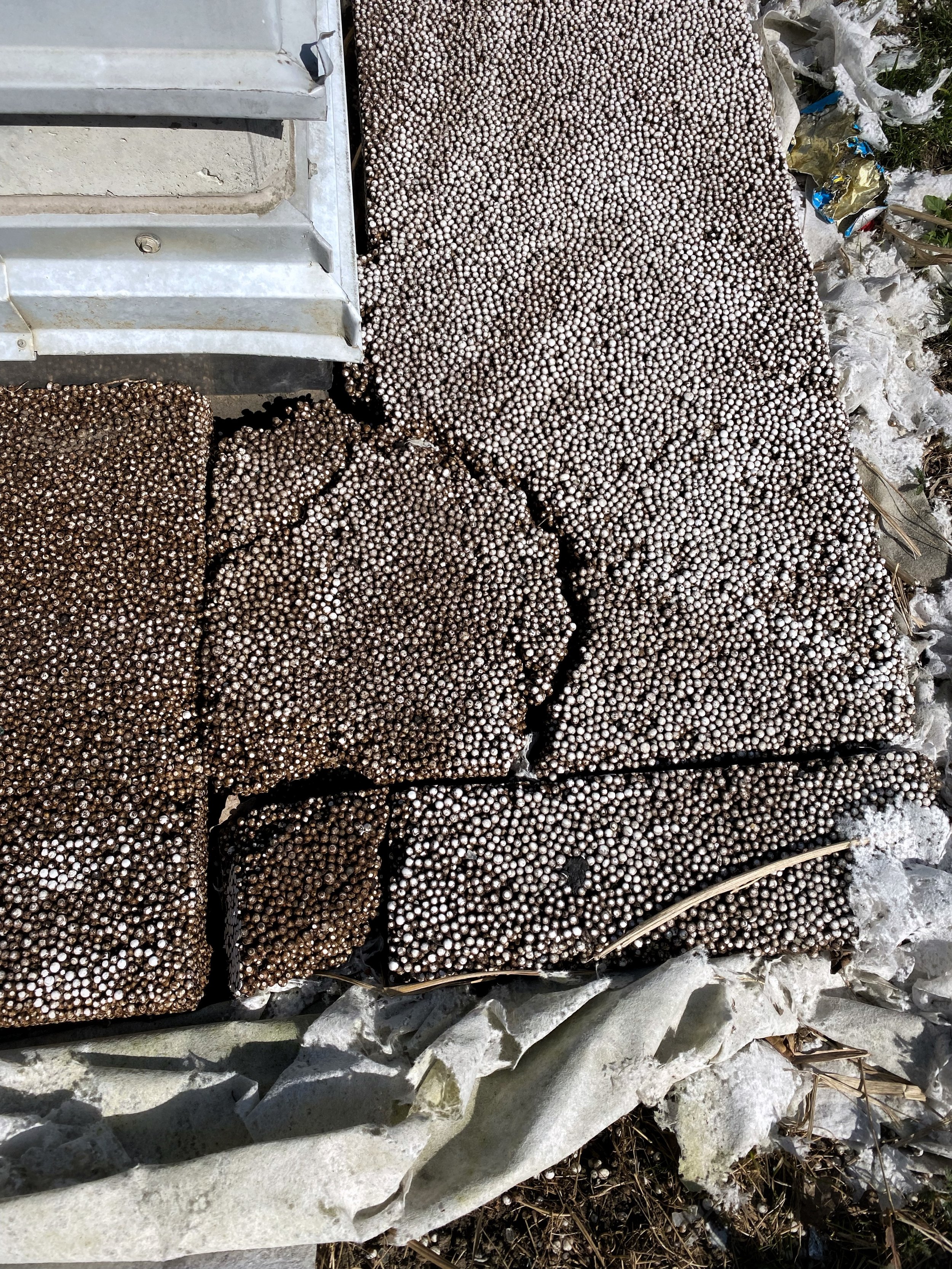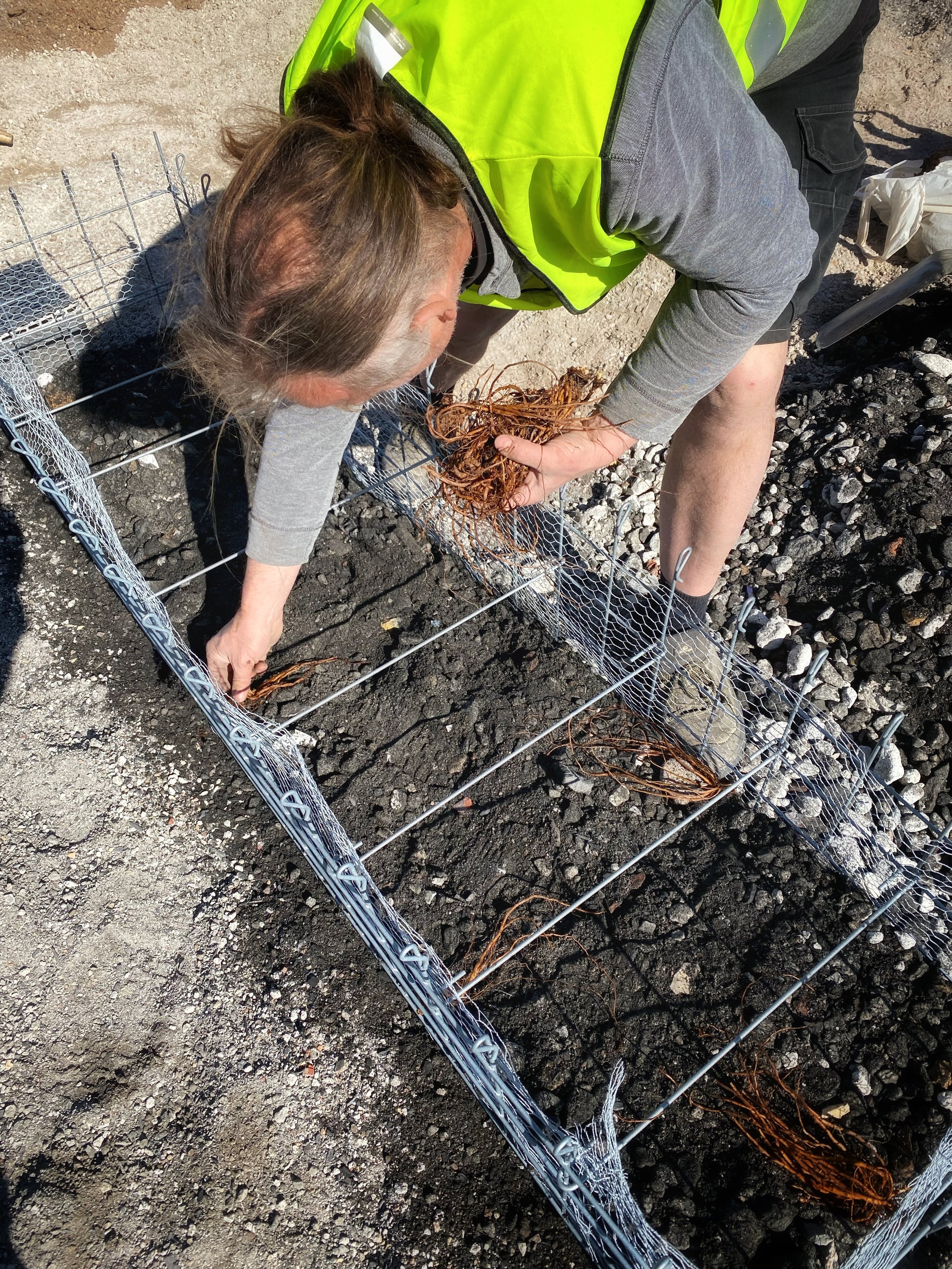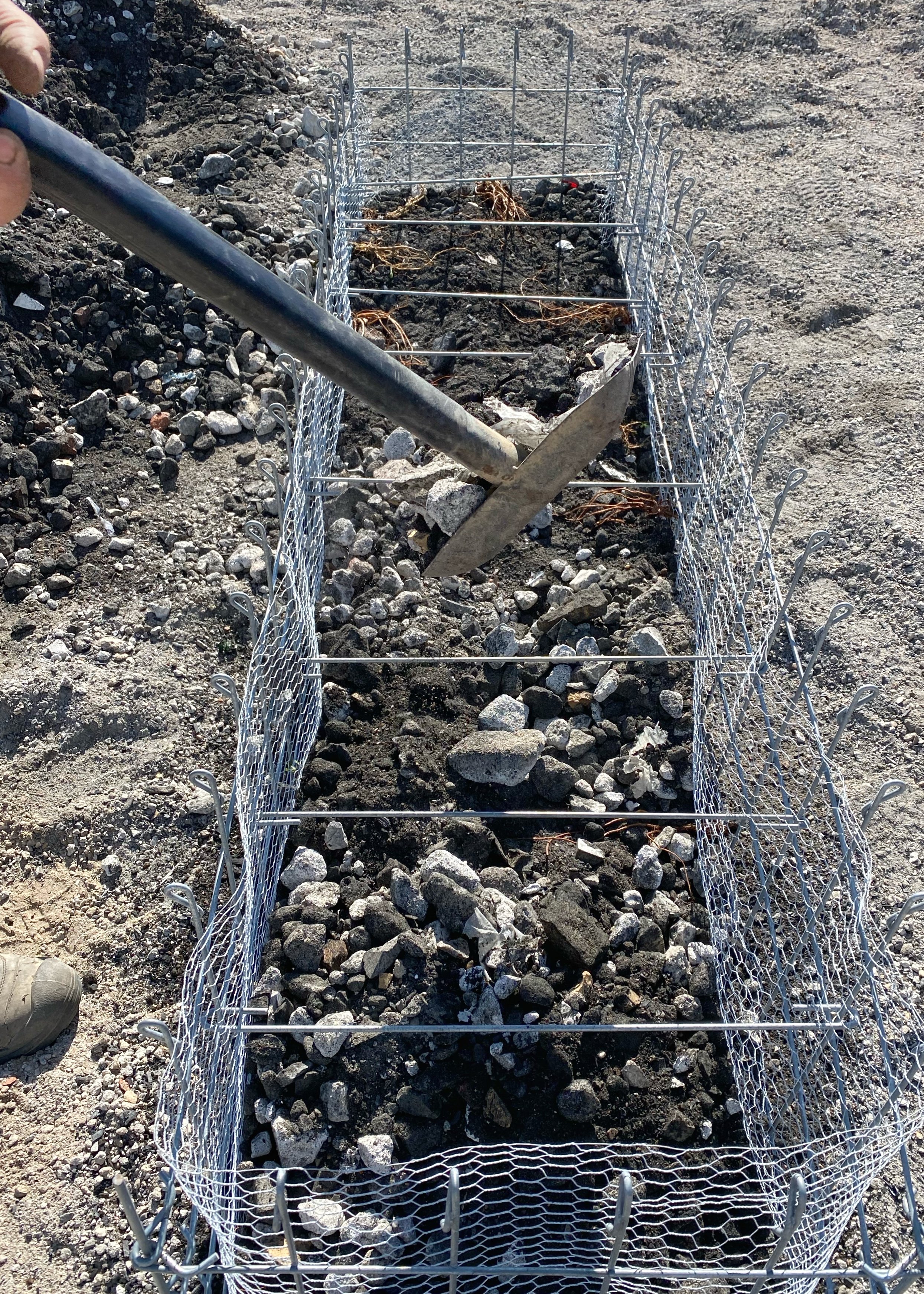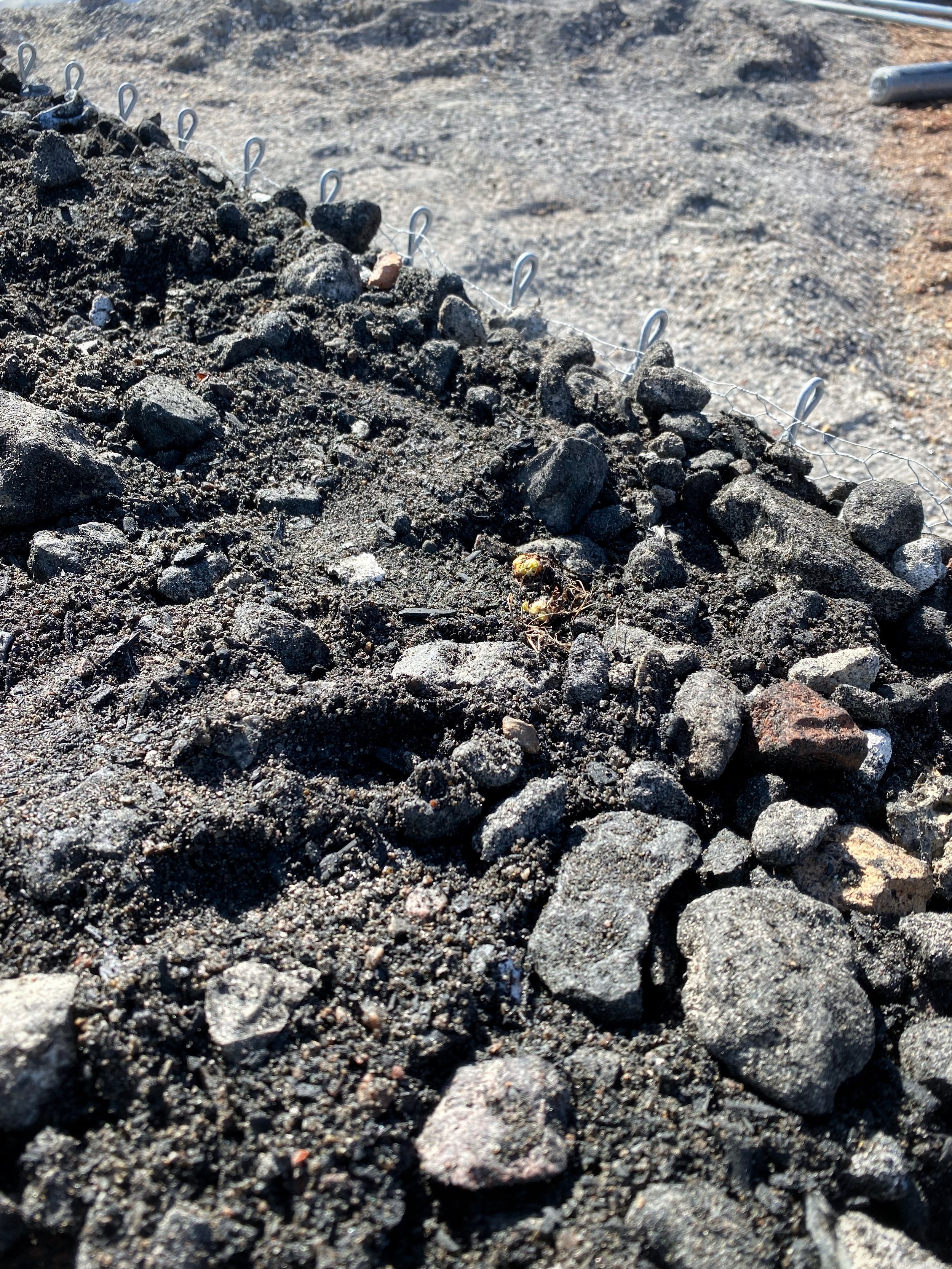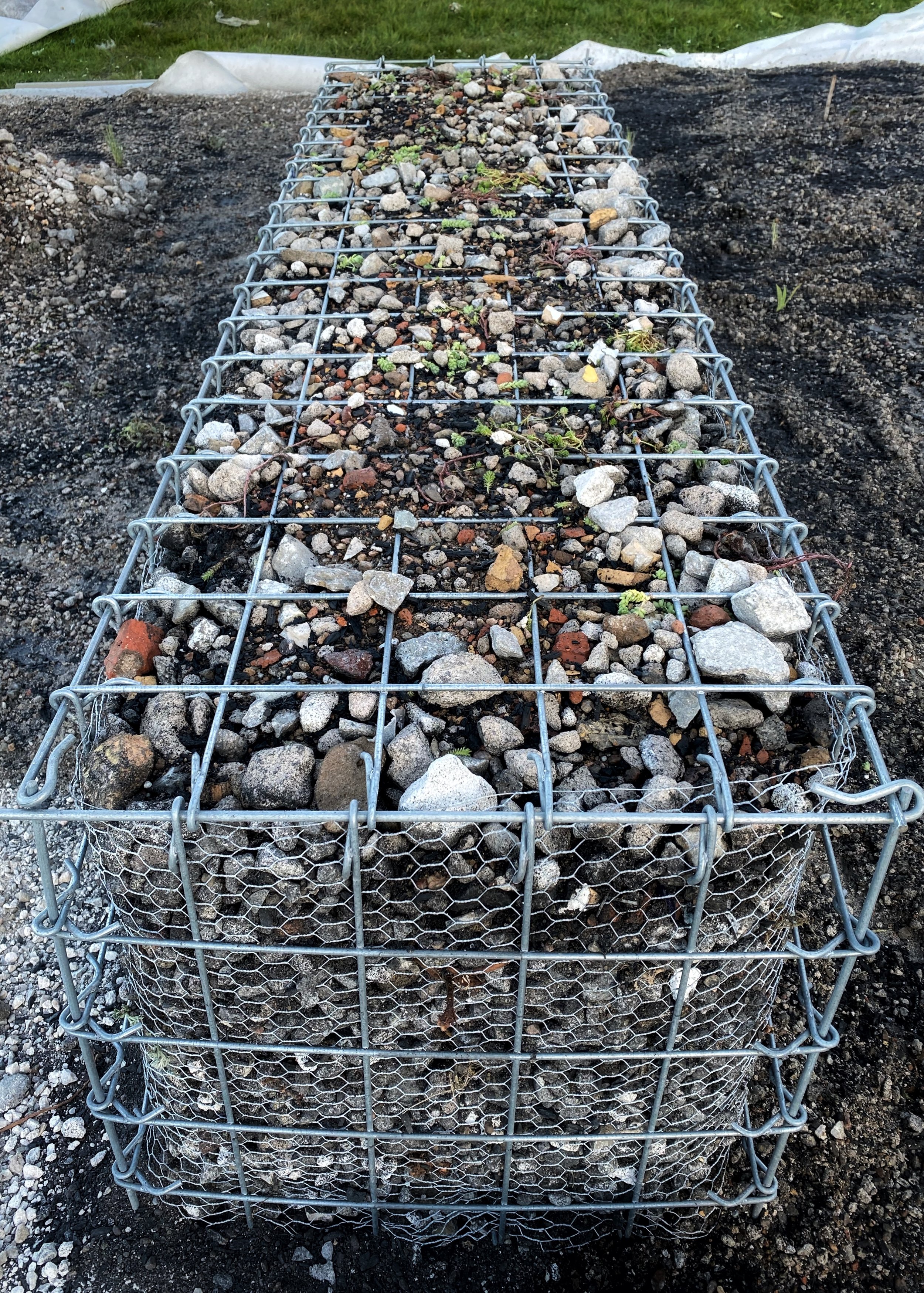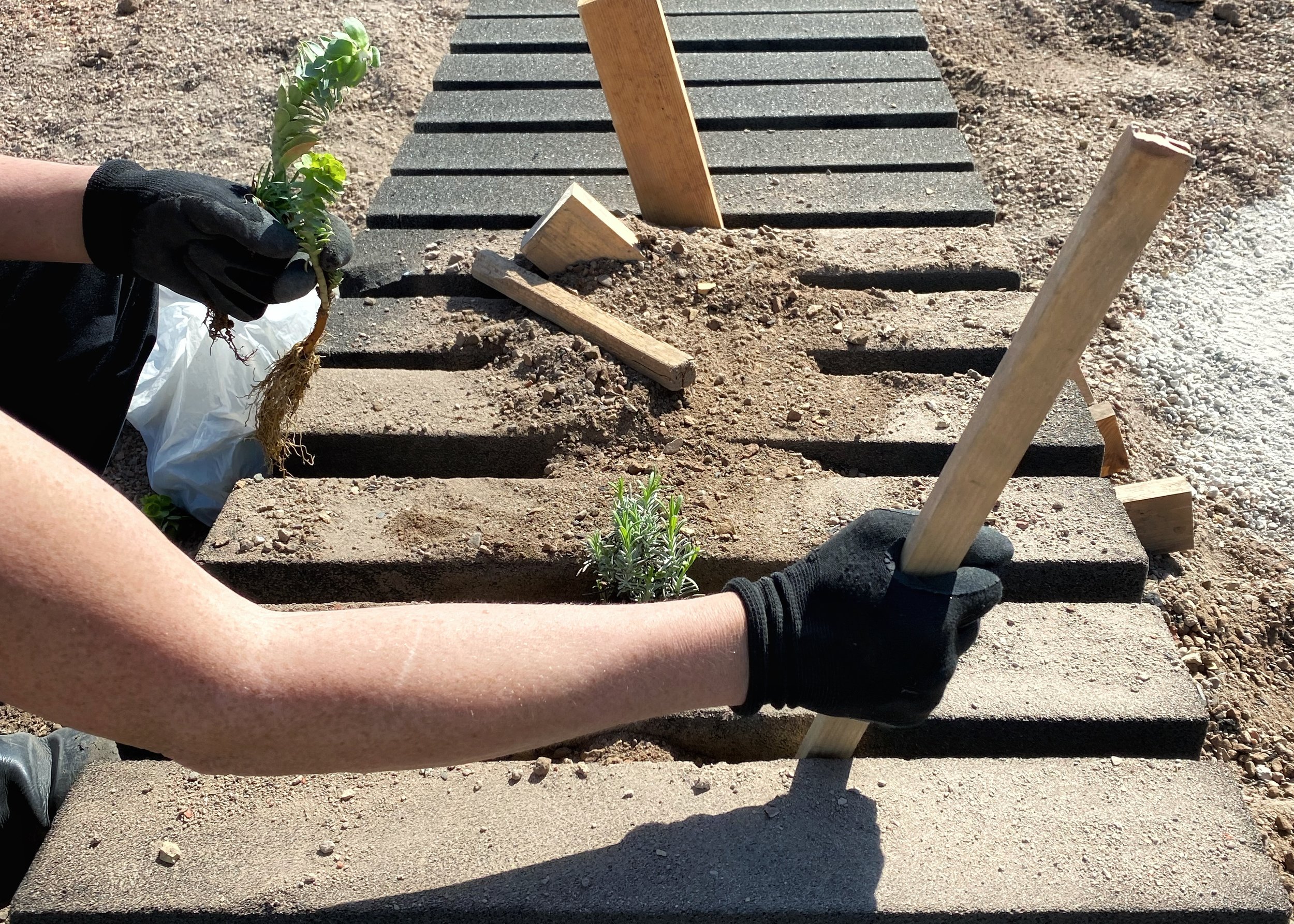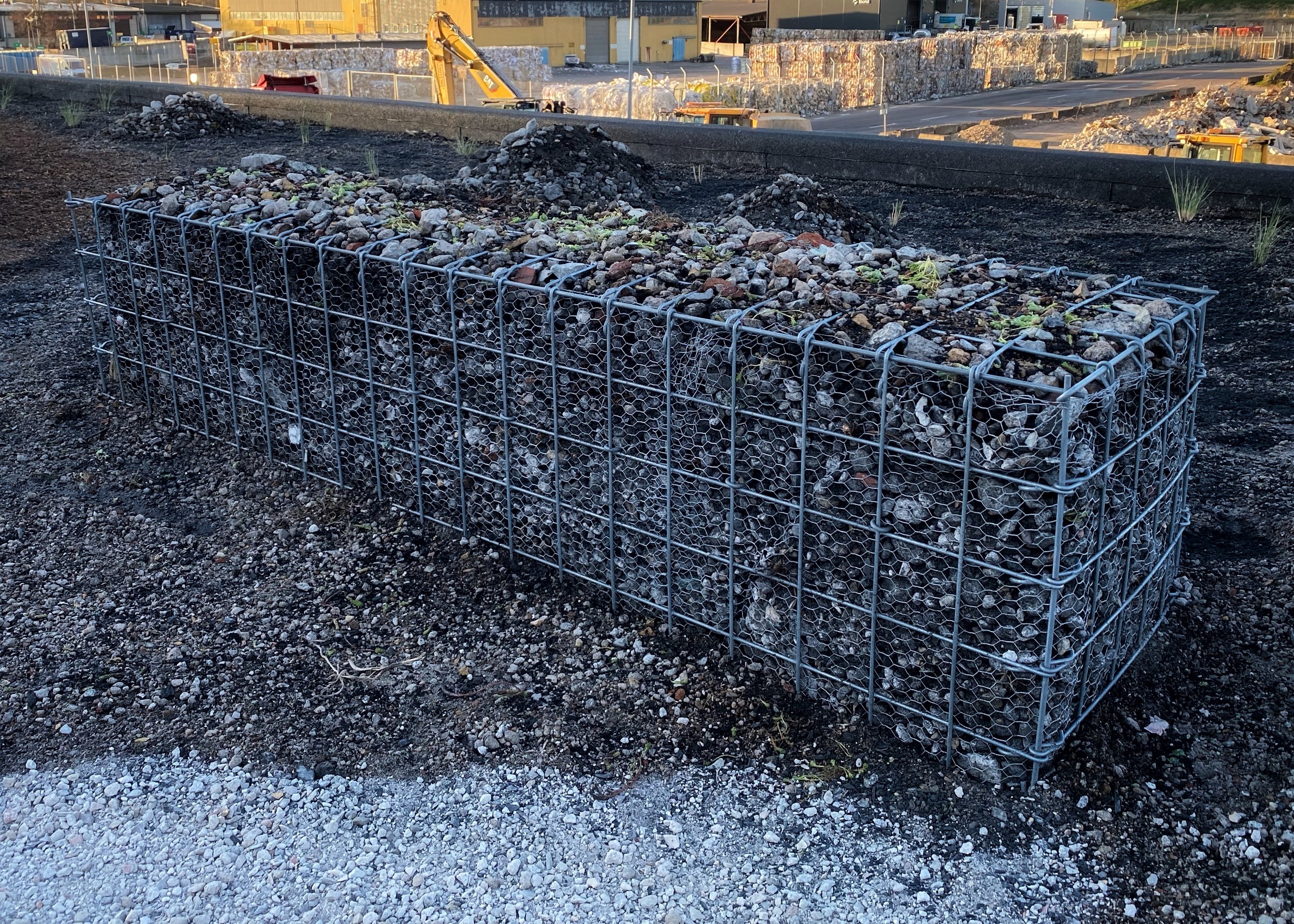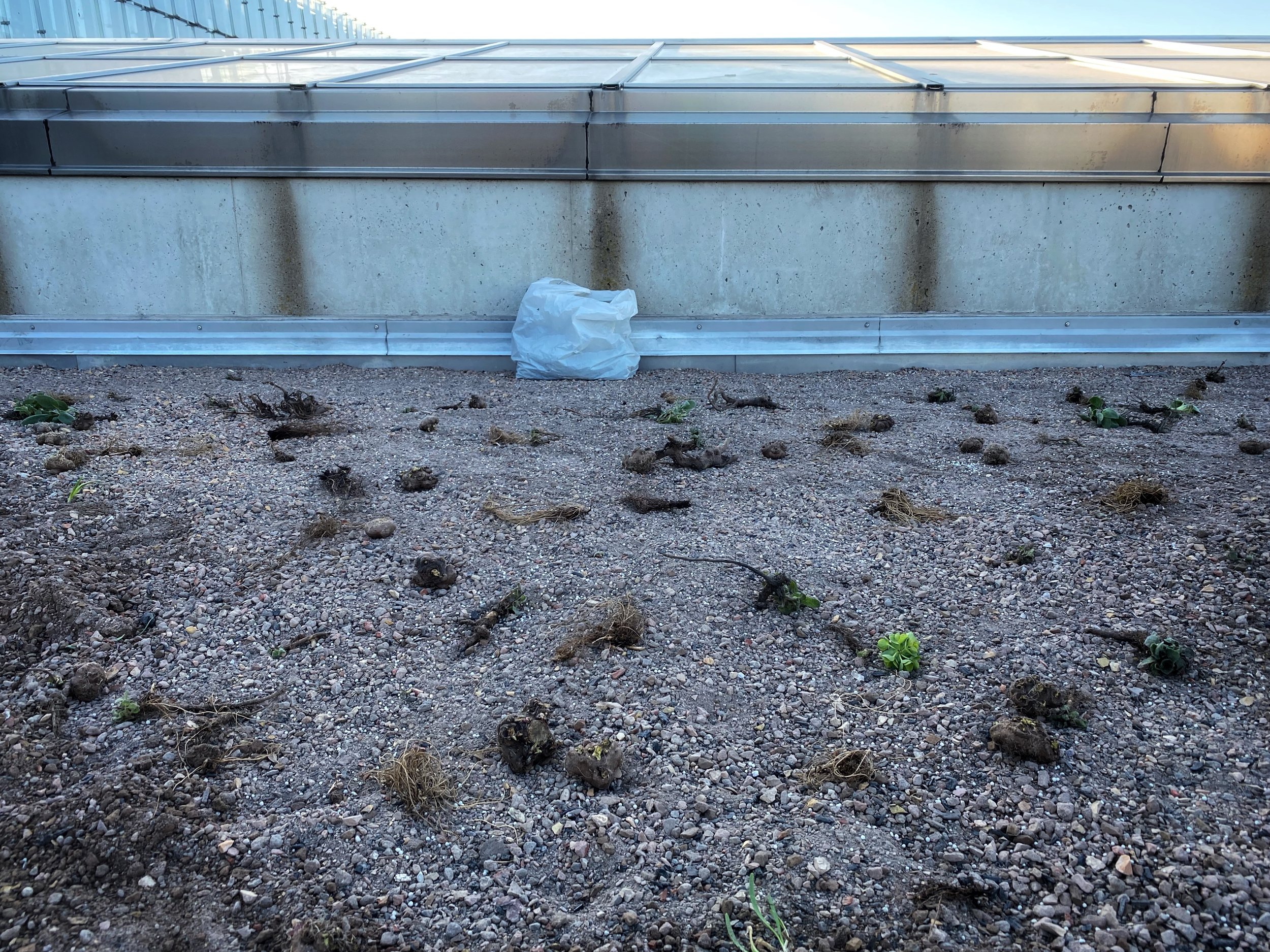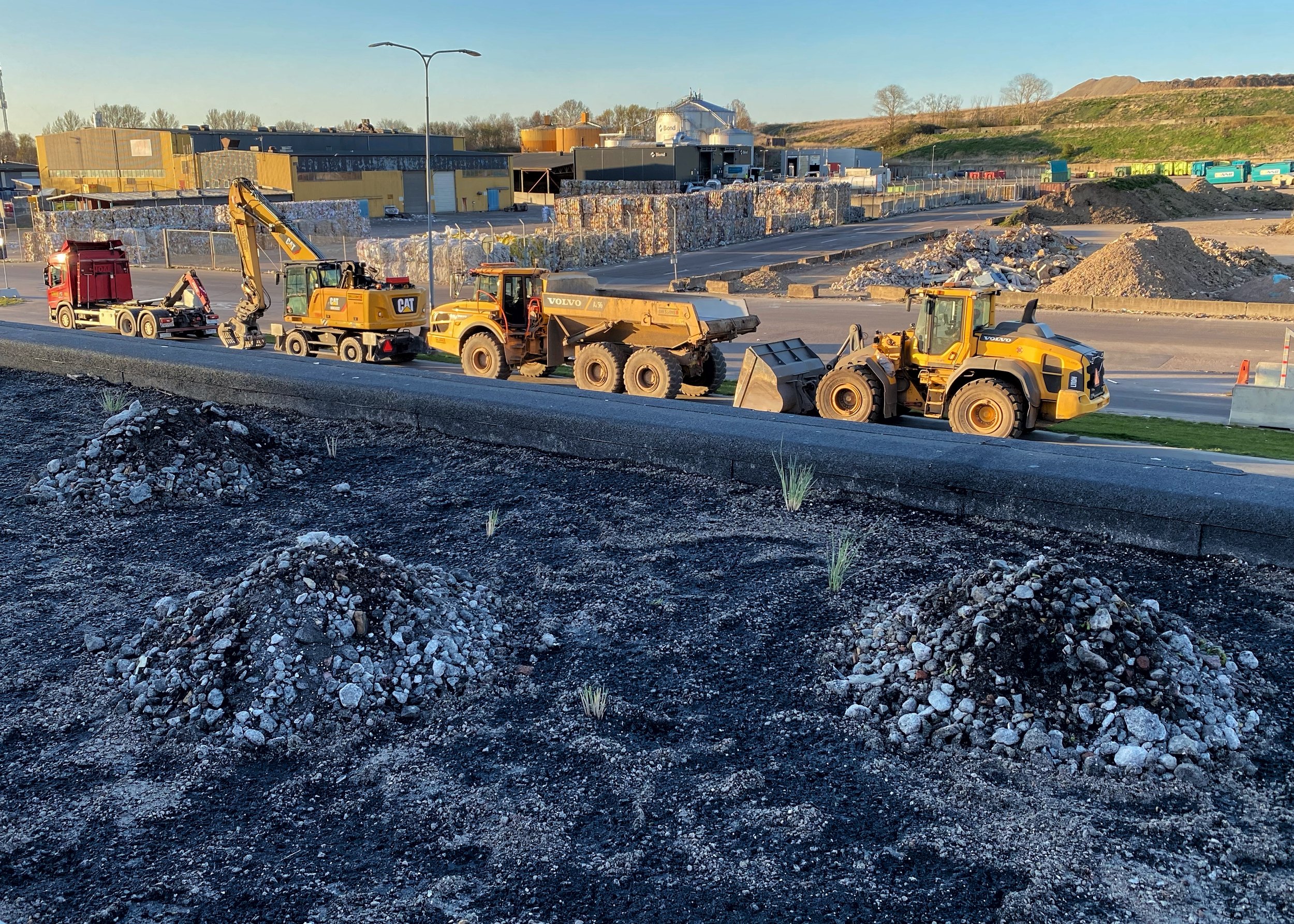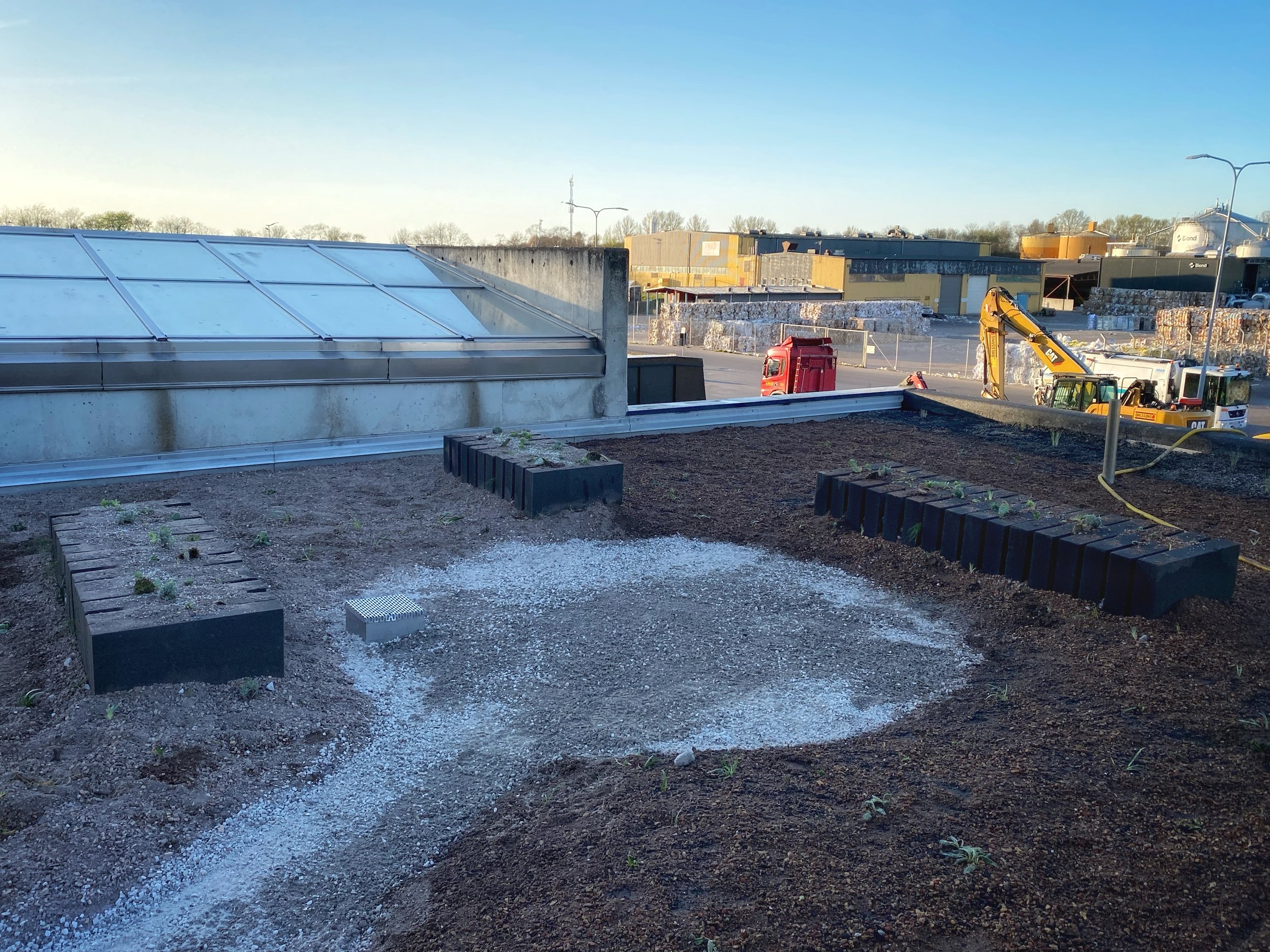Another view of the spiral garden. Peter describes the area against the wall on the top tier to the right of the picture as the best spot in the garden. This is where he is placing some choice specimens from Filipe
Paeonia ‘Dancing butterfly’ in the nursery sand beds at first light
All the beds are organised by rows A-E and numbers 1-42. Peter and the team are in the process of simplifying the sheer range of species, reducing to 2-3 bed instead of mixed numbers
Frosted foam glass blocks in the green roof showcase beds
Here you can see the volcanic rock that is used as a constituent part of the substrate
Prunus domestica ‘Komet’
One of the first iterations of the modular green wall systems that Peter uses. They initially started off as flat surfaces but have since been constructed to undulate giving rise to microclimates and different options for planting. These units are constructed from a thin concrete which can be broken through using a screwdriver to enable planting. The roots of the plants used are cut to between 10-15cm and fed into the holes before back filling with substrate
The green roof site in Helsingborg when we arrived. Four different substrates were used across the site in total, three can be seen here. The lightest material is recycled crushed concrete that would form the paths through the space
Marking out a circular area to be joined by a pathway
Crushed lightweight concrete-80%, sand-10% and biochar-10% formed the substrate for part of the site
Recycled crushed brick, sand and biochar was used elsewhere, mixed at the same rate
Jonatan Malmberg of Biokolprodukter
A root membrane, polystyrene boards and felt layer were the underlay to the substrates
Planting Geranium sanguineum into the gabions
The fourth substrate used in the gabions consisted of much larger particles of lightweight concrete, mixed rubble and biochar
One of the completed gabions planted with Geranium sanguineum, Artemisia sp. Kalimeris incisa ‘Nana blue’ and scattered with Sedum dasphyllum
The foam glass blocks were planted with Festuca glauca ‘Uchte’, Salvia verticillaster, Euphorbia sp. Iris ‘Silver sheen’, Iris pumilla ‘Cherry garden’ and Dianthus ‘Rubin’
Opuntia fragilis was added to the top of the foam glass structures in areas that would act as a deterrent to prevent people sitting on them

